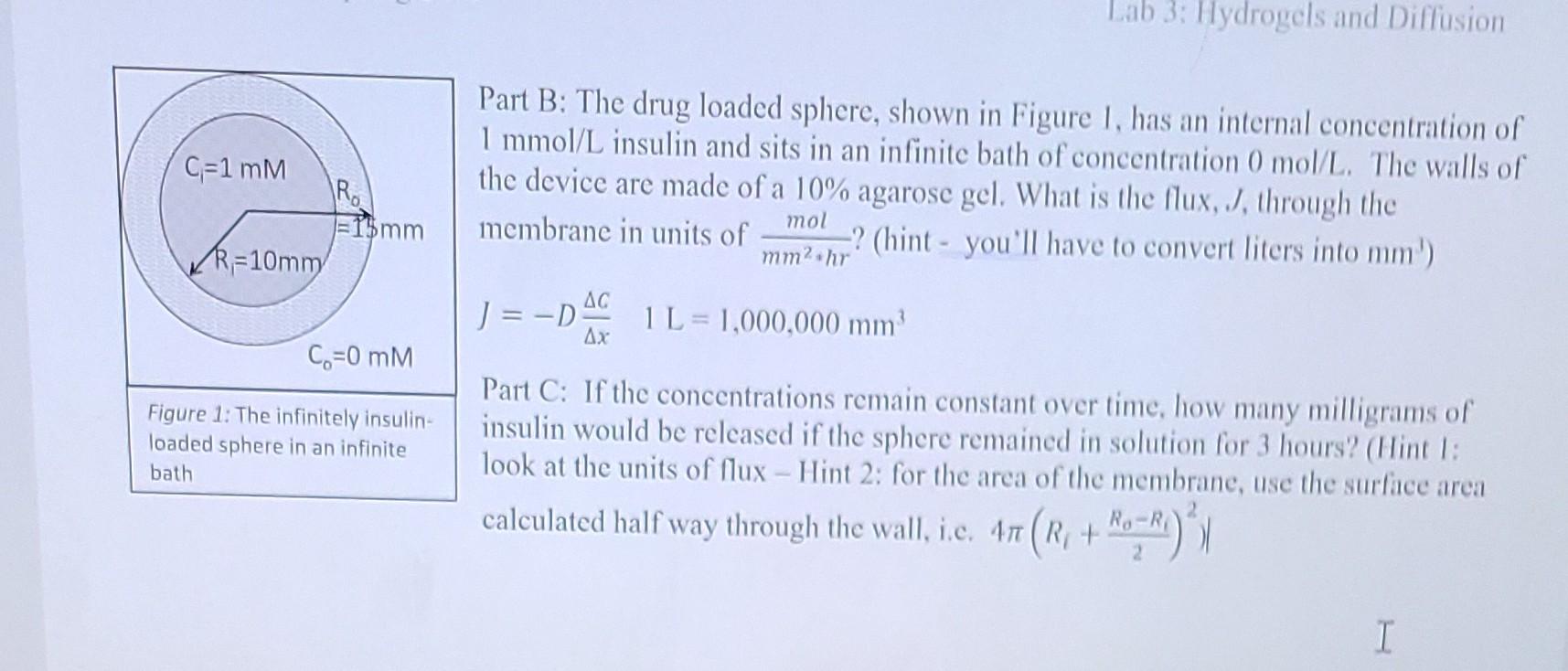Answered step by step
Verified Expert Solution
Question
1 Approved Answer
the diffusion coefficient in 10% agraose is .24218 Lab 3: Hydrogels and Diffusion C=1 mm Part B: The drug loaded sphere, shown in Figure 1.

the diffusion coefficient in 10% agraose is .24218
Lab 3: Hydrogels and Diffusion C=1 mm Part B: The drug loaded sphere, shown in Figure 1. has an internal concentration of 1 mmol/L insulin and sits in an infinite bath of concentration 0 mol/L. The walls of the device are made of a 10% agarose gel. What is the flux, J, through the membrane in units of -? (hint - you'll have to convert liters into mm') mm2 hr Ro = 15 mm mol R=10mm ] =-D AC AX 1 L = 1,000,000 mm Co=0 mm Figure 1: The infinitely insulin- loaded sphere in an infinite bath Part C: If the concentrations remain constant over time, how many milligrams of insulin would be released if the sphere remained in solution for 3 hours? (Hint 1: look at the units of Mux - Hint 2: for the area of the membrane, use the surface area calculated half way through the wall, i.e. 47 (R1+ R1 + Ro=%) * 2Step by Step Solution
There are 3 Steps involved in it
Step: 1

Get Instant Access to Expert-Tailored Solutions
See step-by-step solutions with expert insights and AI powered tools for academic success
Step: 2

Step: 3

Ace Your Homework with AI
Get the answers you need in no time with our AI-driven, step-by-step assistance
Get Started


